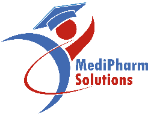Narrative Writing
When writing a safety narrative in a case report, it's essential to provide a clear and detailed account of the adverse event or safety concern.The International Council for Harmonisation of Technical Requirements for Pharmaceuticals for Human Use (ICH) provides guidelines for the development, registration, and post-approval of pharmaceutical products. The ICH guidelines offer standardized approaches to various aspects of drug development, including safety reporting and narrative writing.

Program Highlights

Modules-
20

HRS of Learning-
100+

Weeks -
6

Narrative Samples -
50+

Real world Scenarios-
100+
Program Overview
When it comes to narrative writing in the context of safety reporting, ICH guidelines emphasize the need for clear, concise, and comprehensive narratives to describe adverse events or safety concerns observed during clinical trials. Here are some key points from the ICH E2E pharmacovigilance guideline that pertain to narrative writing:
- Narratives should be organized logically and provide a chronological account of the adverse event, including relevant clinical details.
- Include information on patient demographics, medical history, concomitant medications, and any relevant laboratory or diagnostic findings.
- Describe the onset, duration, severity, and outcome of the adverse event.
- Provide information on any actions taken in response to the adverse event (e.g., dose adjustments, discontinuations).
- Discuss the assessment of causality, including factors that may have contributed to the adverse event (e.g., concomitant medications, underlying conditions).
- Compare the observed adverse event with known information in the medical literature, including previous reports of similar events with the same or similar drug.
- Include any follow-up assessments or additional information obtained after the initial report of the adverse event.
- Clearly state the degree of certainty regarding the relationship between the drug and the adverse event (e.g., certain, probable, possible, unlikely).
- Provide any other relevant information that may assist in understanding the adverse event, such as relevant medical history or specific circumstances surrounding the event.
- Ensure that narratives submitted to regulatory authorities are consistent with the guidelines provided by the respective regulatory agency.

It's important to note that while the ICH guidelines offer general principles, specific regulatory agencies may have additional requirements or expectations for narrative writing. Therefore, it's crucial to be familiar with the specific guidelines of the regulatory authority overseeing the drug development process.

Program Objectives
To learn to draft a concise and comprehensive safety narratives that comply with regulatory standards where in the content provides the following:
The primary objective of a pharmacovigilance narrative in a case report is to assess the safety of a specific drug or medical product. It aims to provide a detailed account of any adverse events or reactions experienced by the patient after using the drug.
The narrative helps in establishing a causal relationship between the administration of the drug and the occurrence of the adverse event. This involves evaluating factors such as timing, dose-response relationship, de-challenge, re-challenge, and alternative explanations.
By documenting adverse events in detail, pharmacovigilance narratives contribute to the early detection of potential safety signals associated with a particular drug. This can lead to further investigation and potential regulatory action.
The narrative provides crucial information for assessing the overall benefit-risk profile of the drug. This is essential for making informed decisions about the use of the drug in clinical practice.
Narratives serve as a comprehensive record of the adverse event, including details about the patient, drug exposure, and clinical outcomes. This information is crucial for effective communication between healthcare professionals, regulatory authorities, and other stakeholders.
Well-documented pharmacovigilance narratives contribute to the body of medical literature, providing valuable information for healthcare professionals, researchers, and policymakers.
The information gathered from case reports can be used to develop or modify risk minimization strategies, such as changes in labeling, dosing recommendations, or contraindications.
These narratives play a vital role in ongoing post-marketing surveillance of drugs. They provide real-world data on the safety and effectiveness of drugs in a broader patient population beyond controlled clinical trials
Case reports and their narratives can be used for educational purposes, providing valuable learning experiences for healthcare professionals, including how to recognize, manage, and report adverse events.
Overall, pharmacovigilance narratives in case reports are a cornerstone of drug safety monitoring and play a crucial role in ensuring the ongoing safety and efficacy of pharmaceutical products in the market. They contribute to evidence-based decision-making in healthcare.
Target Audience
- Medical graduates with MBBS, MD, DO, Ph.Ds', *
- Dental graduates with BDS, MDS, DMD, DDS,
- Pharmacy graduates with B.Pharm, PharmD,
- Ph.D
- Nursing graduates with RN, BS, LPN
- Majors in Biological Sciences/Life Sciences/allied health fields.
- Pharmaceutical Quality analysts.
- Microbiology, Biochemistry, Organic Chemistry and Biotechnology students,
.
- Health Informatics,
- Regulatory affairs
- Medical Affairs
- Clinical Research
- Clinical Data Management or Data sciences
- Clinical Trial Management
- Quality Assurance
- Quality Control
- Pharmacovigilance and Drug Safety
Program Curriculum
Creating a curriculum for pharmacovigilance narratives in case reports would involve a structured approach to teach healthcare professionals, researchers, and students how to effectively document and analyze adverse events related to pharmaceutical products. Here's a suggested curriculum outline:

- Definition and Scope of Pharmacovigilance
- Importance of Adverse Event Reporting
- Regulatory Framework and Guidelines (e.g., ICH E2E)
- Components of a Case Report
- Data Collection and Sources
- Importance of Timely and Accurate Reporting
- Types of Adverse Events (e.g., ADR, SADR)
- Severity Grading and Assessment
- Common and Rare Adverse Events
- Criteria for Causality Assessment
- Tools and Algorithms (e.g., Naranjo Scale)
- De-challenge and Re-challenge
- Writing Clear and Concise Case Narratives
- Inclusion of Relevant Clinical Information
- Avoiding Bias and Speculation
- Basics of Signal Detection
- Methods for Signal Detection (e.g., Bayesian Data Mining)
- Interpretation and Evaluation of Signals
- Understanding Risk-Benefit Ratio
- Factors Influencing Risk-Benefit Profile
- Decision-making based on Risk-Benefit Evaluation
- Regulatory Requirements for Reporting
- Good Pharmacovigilance Practices (GVP)
- Role of National and International Regulatory Agencies
- Importance of Real-World Data
- Ongoing Monitoring and Surveillance Strategies
- Post-Marketing Studies and Observational Research
- Analyzing Real Case Reports
- Developing Pharmacovigilance Narratives
- Group Discussions and Peer Review
- Patient Confidentiality and Privacy
- Reporting Responsibilities and Legal Obligations
- Advocating for Patient Safety
- Emerging Technologies (e.g., AI in Pharmacovigilance)
- Evolving Regulatory Landscape
- Future Directions in Drug Safety Monitoring
- Quizzes and Knowledge Checks
- Case Report Writing Assignments
- Group Projects and Presentations
- Final Exam or Capstone Project
- Mock Regulatory Inspections
- Interactive Data Analysis Workshops
- Guest Lectures from Industry Experts
This curriculum provides a comprehensive overview of pharmacovigilance narratives in case reports, covering both theoretical concepts and practical skills necessary for professionals in the field. It's important to adapt and update the curriculum to incorporate the latest developments in pharmacovigilance practices and regulations.
Career Paths
Pharmacovigilance, as a critical aspect of drug safety, offers a range of career opportunities. Here are some common career paths in Pharmacovigilance:
- Responsibilities: Collect and evaluate adverse event reports, ensure compliance with regulatory requirements, and manage safety databases.
- Skills Needed: Attention to detail, knowledge of regulatory guidelines, strong organizational skills.
- Responsibilities: Assess and evaluate adverse event reports for causality and seriousness, provide medical expertise in safety assessment.
- Skills Needed: Medical background (e.g., PharmD, MD), clinical knowledge, analytical skills.
- Responsibilities: Oversee pharmacovigilance activities, ensure compliance with regulatory requirements, lead safety teams.
- Skills Needed: Leadership, regulatory knowledge, project management skills.
- Responsibilities: Develop and implement risk minimization strategies, conduct benefit-risk assessments, and oversee risk management plans.
- Skills Needed: Risk assessment, regulatory knowledge, communication skills.
- Responsibilities: Ensure compliance with quality standards, conduct audits and inspections, implement quality management systems.
- Skills Needed: Quality assurance knowledge, auditing skills, attention to detail.
- Responsibilities: Liaise with regulatory authorities, ensure compliance with pharmacovigilance regulations, and support regulatory submissions.
- Skills Needed: Regulatory knowledge, communication skills, attention to detail.
- Responsibilities: Analyze safety data to identify potential signals, perform benefit-risk assessments, and contribute to risk management strategies.
- Skills Needed: Analytical skills, statistical knowledge, pharmacovigilance expertise.
- Responsibilities: Conduct safety assessments in clinical trials, contribute to study protocols, and provide safety-related guidance.
- Skills Needed: Clinical research knowledge, medical background, analytical skills.
- Responsibilities: Provide training on pharmacovigilance principles, regulatory requirements, and case processing procedures.
- Skills Needed: Communication skills, knowledge of pharmacovigilance practices.
- Responsibilities: Offer specialized pharmacovigilance services to pharmaceutical companies, regulatory agencies, or research organizations.
- Skills Needed: Expertise in pharmacovigilance, business acumen, networking skills.
- Responsibilities: Analyze safety data, perform statistical analyses, and generate safety reports.
- Skills Needed: Statistical knowledge, data analysis skills, pharmacovigilance expertise.
- Responsibilities: Manage pharmacovigilance databases and IT systems, ensure data integrity and security.
- Skills Needed: IT skills, database management knowledge, attention to detail.

Remember, these career paths often have room for advancement, specialization, and crossover into related fields like regulatory affairs, clinical research, or quality assurance. Continuous learning and staying updated with industry trends and regulations are crucial for success in Pharmacovigilance.
